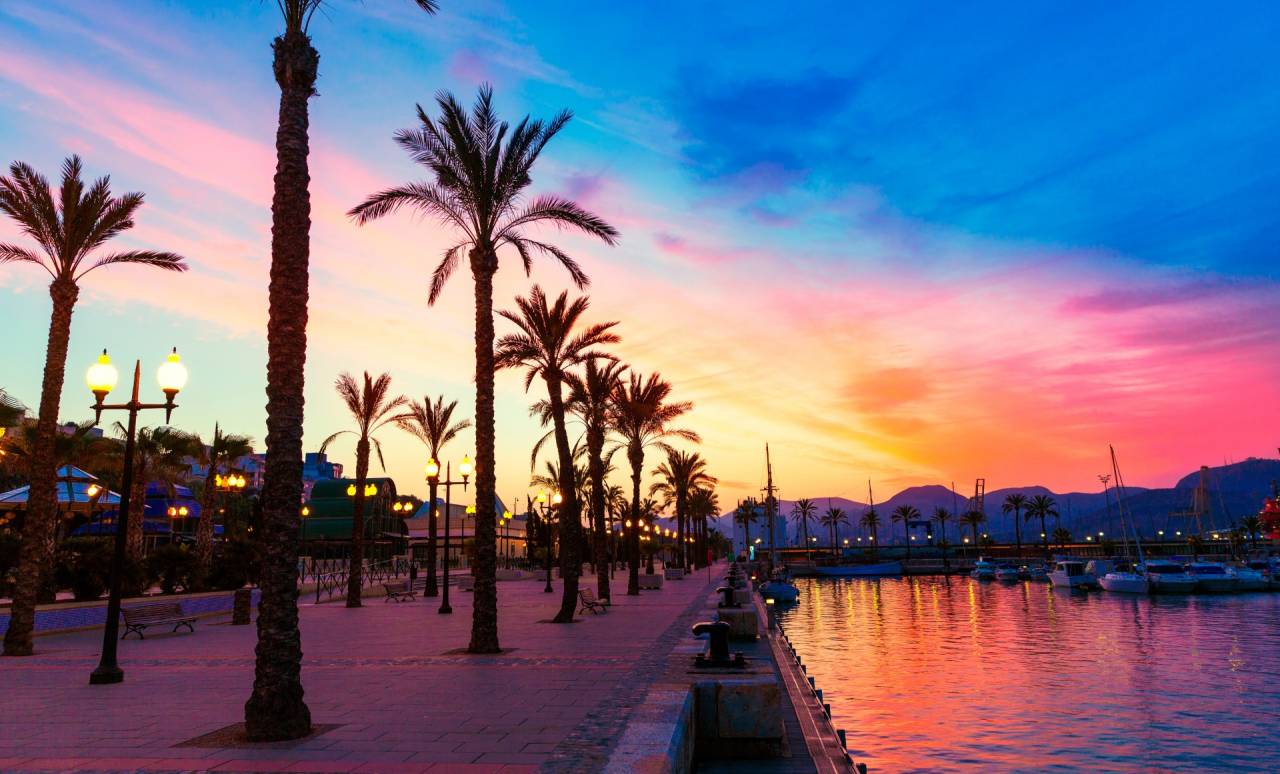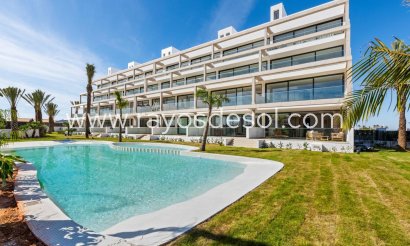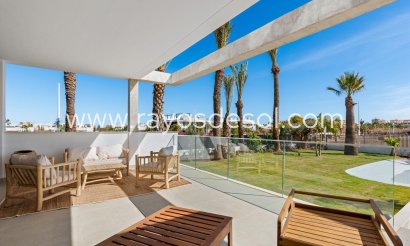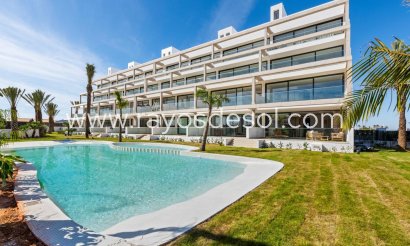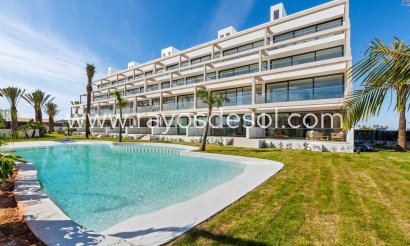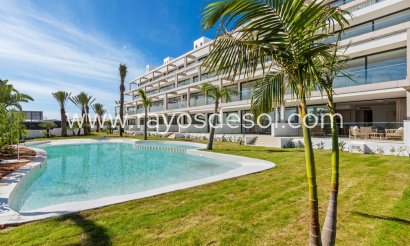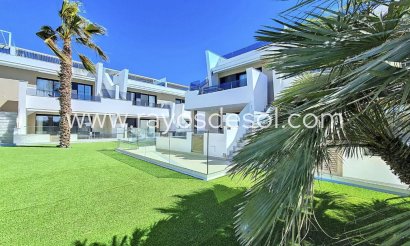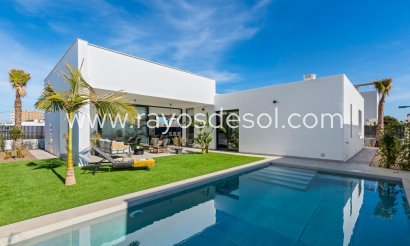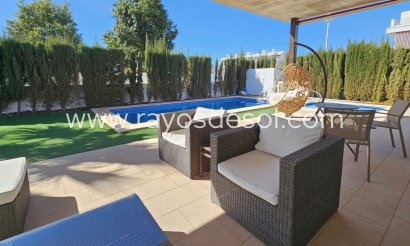Information about this location
Cartagena is a city in southeastern Spain, in the autonomous community of Murcia. It is located on the Costa Cálida, a coastline of about 250 kilometers long. Cartagena is one of the most important port cities in all of Spain. More than 216,000 people live there and its area is 558.08 square kilometers.
The city has a long history. That translates into a wealth of fascinating historical sights that you should not miss. In the area there are also many opportunities for an outing in nature, while beach lovers can also indulge themselves. In short: a destination with something for everyone!

What to do?
According to the oldest sources, the story of Cartagena probably goes back to the city of Mastia. That was an Iberian or Tartessian settlement dating back to the sixth century BC. In the year 227 BC. Hasdrubal the Fair, a general from Carthage, founded the city of Qart Hadast (New City) on the same spot. The name was inspired by Carthage. The place would become the capital of the Carthaginian empire of Hannibal in Hispania. Cartagena was part of the shift of Phoenician power to the west.
In 209 BC. the city was conquered by the Roman general Scipio Africanus and was incorporated into the Roman Empire, under the name Carthago Nova (New Carthage). After the fall of the Roman Empire, the city fell into disrepair and was occupied successively by the Vandals, the Visigoths, the Byzantines and later the Visigoths again.
The Moors have also left their mark on the city. They conquered Cartagena in 714 and renamed it Qartayanna al-Halfa. Alfonso X of Castile conquered Cartagena in the year 1245 and established Christian authority there. After that, Cartagena would briefly pass into the hands of the Crown of Aragon, before quickly reverting to the Crown of Castile under the Treaty of Elche. The fall of the last Moorish kingdom of Granada heralded a period of decline. A few centuries later, the city's port would play an important role in the Mediterranean.
Cartagena is also known for several battles. For example, a Battle of Cartagena was fought during both the Thirty Years' War and the Seven Years' War. In 1728 Cartagena became the capital of the Department of the Mediterranean of the Spanish Navy. New infrastructure was built and the population grew enormously in a short time.
During the Spanish Civil War, Cartagena was one of the most important strongholds of the Republicans. Prosperity grew in the 1950s thanks to increased industrial activity, but at the end of the same century the city experienced a decline. Today Cartagena is the parliamentary seat of the Autonomous Region of Murcia.
By far the most popular attraction of Cartagena and by extension of the Murcia region − is the Roman theater. Its first stones were laid in the first century BC. laid. At that time, the structure could accommodate about 7,000 people and was located on a hill. It was used until the third century AD. The theater you see today is a reconstructed version of the original Roman theater. The accompanying museum, the Museo del Teatro Romano, tells you the fascinating story of this archaeological gem.
Nearby you will find the Cathedral of Santa María la Vieja, or what remains of it. This medieval religious temple was badly damaged during the Spanish Civil War. Admire the ruins and immerse yourself in Cartagena's history. For another sight, head to the Cerro de la Concepción, one of the city's five hills. From here you have a phenomenal view of the city and its surroundings. Inside this defensive structure you will learn more about the local history. After your visit, take a stroll around the Parque Torres, which surrounds the castle.
To catapult yourself back to the time of the Romans, visit the Casa de la Fortuna. In this building on Plaza de la Risueño, you enter a Roman home from the first century BC. Explore the different rooms, admire Roman pottery or marvel at a mural or mosaics. You really should not miss this place if you want to see Roman Cartagena with your own eyes.
Cartagena's City Hall is housed in the Palacio Consistorial de Cartagena. This graceful building is sure to charm you. Furthermore, you should not miss the various museums of the city in the center. We are thinking of the Museo-Refugio de la Guerra Civil about the Spanish Civil War, and the Museo Naval about shipbuilding.
Cartagena is not only a wonderful destination for history buffs, but also for fans of beaches. After all, in the vicinity of your home there are phenomenal beaches that invite you to relax and spend quality time with the whole family. Opt for a day on the soft sands of a pristine bay or explore the long stretches of La Manga del Mar Menor.
Don't forget to bring your hiking boots during your stay in Cartagena. With the Calblanque Regional Park, you will find a paradise for hiking just a stone's throw away, while also excellent with a mountain bike. The coastline near Cartagena is hilly and caters to nature lovers every day. Enjoy the special flora and fauna and be surprised by breathtaking views. Other beautiful places to visit are the Mar Menor and the Regional Park Salinas y Arenales de San Pedro del Pinatar. And when it comes to water sports, you will be spoiled for choice in this corner of the Spanish mainland.
Restaurants and Bars in Cartagena
Your hunger will soon be satisfied in one of the many restaurants in Cartagena. There is a wide range with something for everyone. Marisquería La Marina is the place to be for those who love fish and seafood. You can enjoy, among other things, fresh shrimp, pulpo and lobster. Delicious anchovies are the specialty of Bodega La Fuente.
At Magogo you have come to the right place for a culinary experience in a stylish decor. This gastronomic project by María Gómez and Adrián de Marcos has been awarded one Michelin star in the past. Magogo brings the local flavors to your plate while giving it a modern twist. The flavors of Cartagena and Murcia are also extensively discussed at La Posada de los Habaneros, supplemented with goodies from other corners of Spain. Other recommended places to eat and drink in Cartagena are El Barrio de San Roque, Albedrío, La Alacena de María, Luces and La Cerdanya.
Golf in Cartagena
What could be better than playing a ball under the radiant sun during your stay in Cartagena? As a golf enthusiast you are in luck in these parts of Spain, because you will find beautiful golf facilities nearby. Not far from Cartagena, on the Mar Menor, you will find La Serena Golf. This golf course has eighteen holes and was designed by the professional player Manuel Piñero. Nearby is Roda Golf, with eighteen holes of pure golfing pleasure. Other nearby options include La Manga Club, La Torre Golf and Mar Menor Golf.
The weather in Cartagena
Having a home in Cartagena offers you many advantages. One of the biggest advantages is without a doubt the pleasant climate of the Costa Cálida. On an annual basis you can enjoy about 320 days of sunshine a year and an average temperature of around 18 degrees. The winters are mild and the summers not too hot thanks to the presence of the Mediterranean Sea. The ideal conditions for relaxing on your terrace almost all year round, or for a dip in your swimming pool.
Buying a property in Cartagena
Thinking about purchasing a property around Cartagena? Search directly in our properties for sale in the region Cartagena via this link or contact us to discuss your preferences and answer your questions.


 Register or login
Register or login





